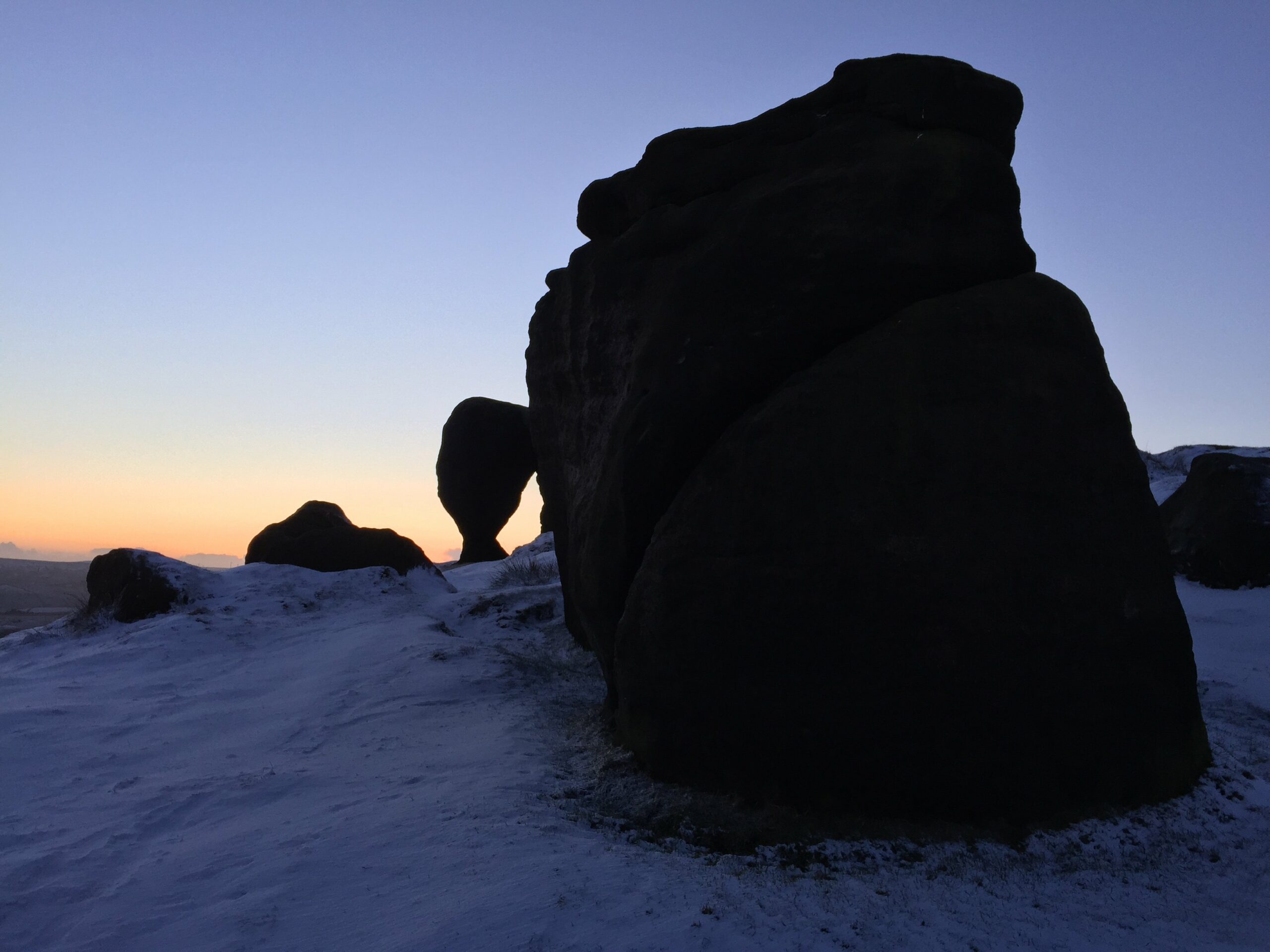|
Bridestones Moor
|
Bridestones Moor
Notice: Function short_description was called incorrectly. Product properties should not be accessed directly. Backtrace: require('wp-blog-header.php'), require_once('wp-includes/template-loader.php'), include('/plugins/woocommerce/templates/single-product.php'), wc_get_template_part, load_template, require('/themes/understrap/woocommerce/content-single-product.php'), include('/themes/understrap/woocommerce/single-product/components/product-info.php'), WC_Abstract_Legacy_Product->__get, wc_doing_it_wrong Please see Debugging in WordPress for more information. (This message was added in version 3.0.) in /home/cabox/workspace/wp-includes/functions.php on line 6114
Bridestones Moor is an important heritage site, notable for its many weird-shaped stones standing on an escarpment overlooking the Calder Valley. Its natural environment is a hotspot for rare animals and plants, and it is Calderdale's first community-owned nature reserve.
Contact details
Information on Bridestones Moor
Attraction type:
Interests
- Adventure & Leisure
- Historic Sites & Trails
- Wildlife & Nature
Bridestones Moor is an important heritage site, notable for its many weird-shaped stones standing on an escarpment overlooking the Calder Valley. Wind and rain over thousands of years have weathered away the soft grit-stone into curious shapes, some looking like human heads and faces, whilst others look like prehistoric birds, a giant tortoise, and a bear. One fifteen foot high, oval-shaped boulder, known as ‘The Great Bridestone,’ appears precariously balanced, as if it might topple over at any moment.
It is thought that the stones were worshipped by Ancient Britons in veneration of the spirits that reside within them. The name ‘Bridestones’ might be derived from ‘Brigantia’, goddess of the Brigantes tribe of northern England (also known as Bridia, Brighid, or Briga) or they may take their name from bride as in the ‘bride and groom’ at a wedding ceremony, as in times gone by weddings supposedly took place on the moor where these outcrops of rock are located.
This landscape was made famous by Ted Hughes, in his poem “Bridestones”, which features in “Remains of Elmet”.
The view of the landscape from this outcrop of rocks is truly magnificent in all directions, and the moor is a hotspot for rare animals and plants. Curlew, lapwing, red grouse, golden plover and other endangered bird species breed there in the spring. Four species of owls regularly hunt over the peatlands, along with the occasional red kite, hen harrier and peregrine falcon.
Bridestones Moor is Calderdale’s first community-owned nature reserve, and it is managed by Bridestones Rewilded, a not-for-profit Community Interest Company and professional group of naturalists, ecologists and members of the local community. Their vision is to enhance biodiversity at the site and restore the land for nature and people.
The Bridestones are located about half a mile north-east of Eastwood Road, where a footpath runs across the (often boggy) moor to the outcrops. Another path connects the north side of the outcrops from Kebs Road and from just opposite Orchan House Farm at Fast Ends – it runs in a southerly direction across Bridestones Moor.
OS grid reference: SD 9334 26750

 >
>
 >
>